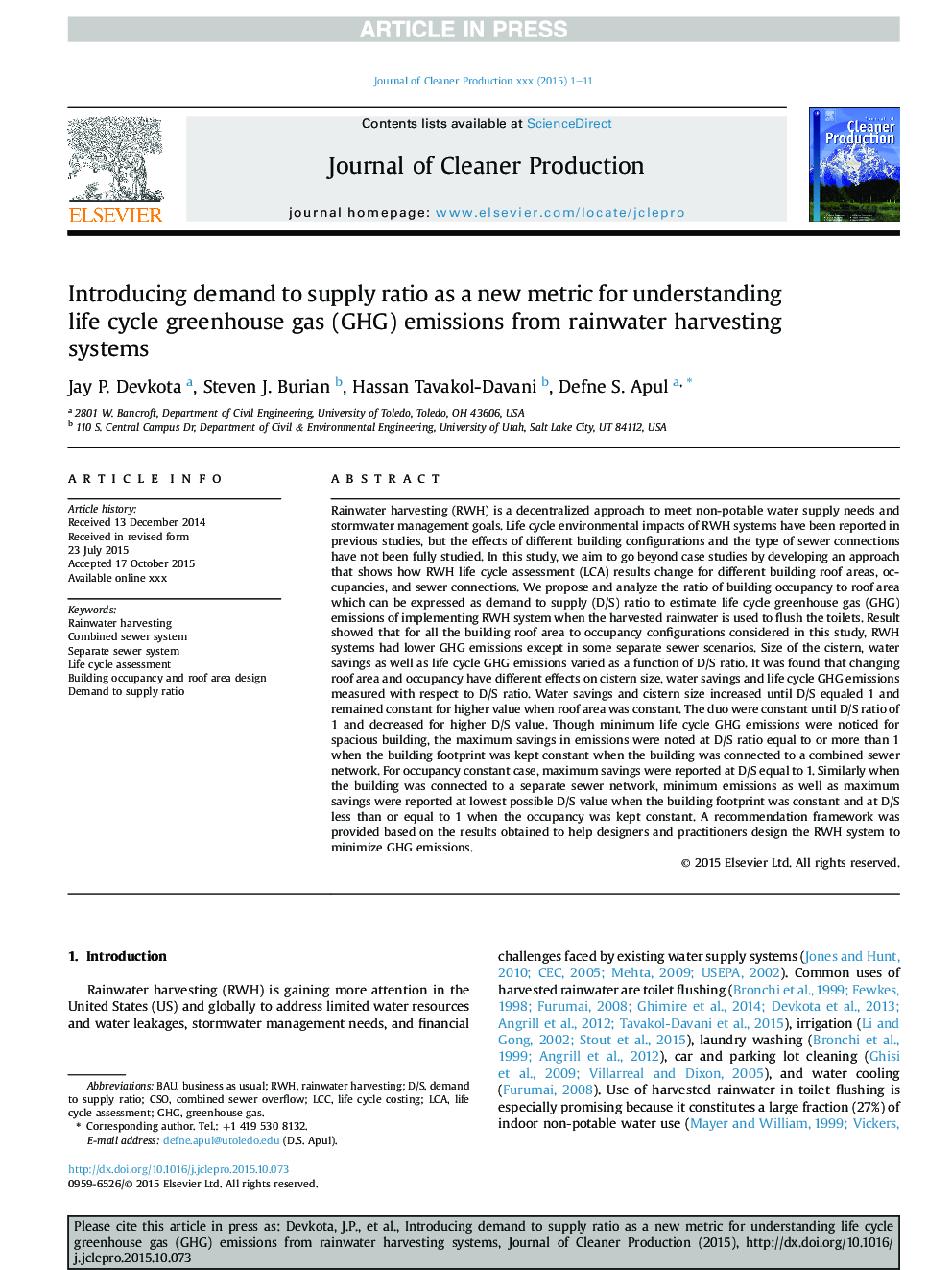| کد مقاله | کد نشریه | سال انتشار | مقاله انگلیسی | نسخه تمام متن |
|---|---|---|---|---|
| 5479566 | 1522091 | 2017 | 11 صفحه PDF | دانلود رایگان |
عنوان انگلیسی مقاله ISI
Introducing demand to supply ratio as a new metric for understanding life cycle greenhouse gas (GHG) emissions from rainwater harvesting systems
دانلود مقاله + سفارش ترجمه
دانلود مقاله ISI انگلیسی
رایگان برای ایرانیان
کلمات کلیدی
GHGRWHCSOLCCBaU - BAULCA - ارزیابی چرخه حیاتLife Cycle Assessment - ارزیابی چرخه عمر یا چرخه حیاتRainwater harvesting - جمع آوری آب بارانCombined sewer overflow - سرریز فاضلاب ترکیبیcombined sewer system - سیستم فاضلاب ترکیبیLife cycle costing - هزینه چرخه زندگیBusiness as Usual - کار طبق معمولGreenhouse gas - گاز گلخانه ای
موضوعات مرتبط
مهندسی و علوم پایه
مهندسی انرژی
انرژی های تجدید پذیر، توسعه پایدار و محیط زیست
پیش نمایش صفحه اول مقاله

چکیده انگلیسی
Rainwater harvesting (RWH) is a decentralized approach to meet non-potable water supply needs and stormwater management goals. Life cycle environmental impacts of RWH systems have been reported in previous studies, but the effects of different building configurations and the type of sewer connections have not been fully studied. In this study, we aim to go beyond case studies by developing an approach that shows how RWH life cycle assessment (LCA) results change for different building roof areas, occupancies, and sewer connections. We propose and analyze the ratio of building occupancy to roof area which can be expressed as demand to supply (D/S) ratio to estimate life cycle greenhouse gas (GHG) emissions of implementing RWH system when the harvested rainwater is used to flush the toilets. Result showed that for all the building roof area to occupancy configurations considered in this study, RWH systems had lower GHG emissions except in some separate sewer scenarios. Size of the cistern, water savings as well as life cycle GHG emissions varied as a function of D/S ratio. It was found that changing roof area and occupancy have different effects on cistern size, water savings and life cycle GHG emissions measured with respect to D/S ratio. Water savings and cistern size increased until D/S equaled 1 and remained constant for higher value when roof area was constant. The duo were constant until D/S ratio of 1 and decreased for higher D/S value. Though minimum life cycle GHG emissions were noticed for spacious building, the maximum savings in emissions were noted at D/S ratio equal to or more than 1 when the building footprint was kept constant when the building was connected to a combined sewer network. For occupancy constant case, maximum savings were reported at D/S equal to 1. Similarly when the building was connected to a separate sewer network, minimum emissions as well as maximum savings were reported at lowest possible D/S value when the building footprint was constant and at D/S less than or equal to 1 when the occupancy was kept constant. A recommendation framework was provided based on the results obtained to help designers and practitioners design the RWH system to minimize GHG emissions.
ناشر
Database: Elsevier - ScienceDirect (ساینس دایرکت)
Journal: Journal of Cleaner Production - Volume 163, 1 October 2017, Pages 274-284
Journal: Journal of Cleaner Production - Volume 163, 1 October 2017, Pages 274-284
نویسندگان
Jay P. Devkota, Steven J. Burian, Hassan Tavakol-Davani, Defne S. Apul,